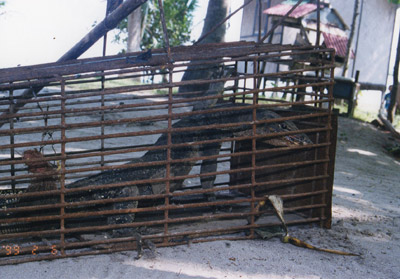I am not going to bore you with a graph showing visitor numbers to Thailand. Since 1998 the Kingdom claims it has seen year on year increases in visitor numbers. Starting in 1998 with 7.76 million foreign arrivals to 2012 when 22.3 million came to the Land of Smiles.
Many involved in tourism in Thailand feel that the good times will never end. Despite blips caused by the SARS epidemic and the Bird Flu epidemic, the flooding in 2011, the tsunami in 2004 and the coup in 2006 Thailand is more popular than ever. The massive downswing in the world economy in 2008 might have seen a drop in visitors from Europe and the US but it looks like the shortfall was made up for by large numbers of Russian and Chinese tourists. It is thus curious that authorities have been clamping down on Russians and Koreans working as translators and tour guides illegally. The assumption that they are taking jobs away from Thai people is spurious.
This year (2013) has seen the government propose another airport tax to cover unpaid medical expenses. It turns out that most of these expenses are from illegal immigrants. The policy is unclear as if the payment would provide any health cover and how the money would be distributed.
More seriously the Shinawatra government has been trying to push through an amnesty bill that would allow Thaksin Shinawatra to return to the Kingdom. Nothing is more guaranteed to stir up the feelings of the divided political activists in Bangkok and the country as large.
To a casual observer, it seems like the powers that be are testing whether they can do anything to stop the escalating tourist numbers. It also seems that inflation can’t curb the influx of visitors.
However, I’ve been checking the Christmas and New Year bookings in Koh Phangan this year and it is clear that Christmas bookings are down, but New Year is sold out as usual.
Although there is a Haad Rin ‘Moon’ party at Christmas, it is clear that Christmas is more of a family time for hotel bookings. These people are staying way from Koh Phangan this year. Maybe the problems in Bangkok are causing this, or perhaps the continued squeeze caused by the rocky economic recovery in Europe.
In contrast the young people, the backpackers, the gap –year people and the ravers are undeterred by the politics in the capital and the rising prices.
The trouble for Koh Phangan is that it is becoming too dependent on the Full Moon Party for its revenue. If something were to happen to the party then the visitor numbers could half within a month. Last New Year a young Brit was shot. More such tragedies could conceivably close the party down. After all, this is Thailand – not the most predictable place in the world.
And by the way the fish and chips in the place in the photo is not bad at all.
Many involved in tourism in Thailand feel that the good times will never end. Despite blips caused by the SARS epidemic and the Bird Flu epidemic, the flooding in 2011, the tsunami in 2004 and the coup in 2006 Thailand is more popular than ever. The massive downswing in the world economy in 2008 might have seen a drop in visitors from Europe and the US but it looks like the shortfall was made up for by large numbers of Russian and Chinese tourists. It is thus curious that authorities have been clamping down on Russians and Koreans working as translators and tour guides illegally. The assumption that they are taking jobs away from Thai people is spurious.
This year (2013) has seen the government propose another airport tax to cover unpaid medical expenses. It turns out that most of these expenses are from illegal immigrants. The policy is unclear as if the payment would provide any health cover and how the money would be distributed.
More seriously the Shinawatra government has been trying to push through an amnesty bill that would allow Thaksin Shinawatra to return to the Kingdom. Nothing is more guaranteed to stir up the feelings of the divided political activists in Bangkok and the country as large.
To a casual observer, it seems like the powers that be are testing whether they can do anything to stop the escalating tourist numbers. It also seems that inflation can’t curb the influx of visitors.
However, I’ve been checking the Christmas and New Year bookings in Koh Phangan this year and it is clear that Christmas bookings are down, but New Year is sold out as usual.
Although there is a Haad Rin ‘Moon’ party at Christmas, it is clear that Christmas is more of a family time for hotel bookings. These people are staying way from Koh Phangan this year. Maybe the problems in Bangkok are causing this, or perhaps the continued squeeze caused by the rocky economic recovery in Europe.
In contrast the young people, the backpackers, the gap –year people and the ravers are undeterred by the politics in the capital and the rising prices.
The trouble for Koh Phangan is that it is becoming too dependent on the Full Moon Party for its revenue. If something were to happen to the party then the visitor numbers could half within a month. Last New Year a young Brit was shot. More such tragedies could conceivably close the party down. After all, this is Thailand – not the most predictable place in the world.
And by the way the fish and chips in the place in the photo is not bad at all.











